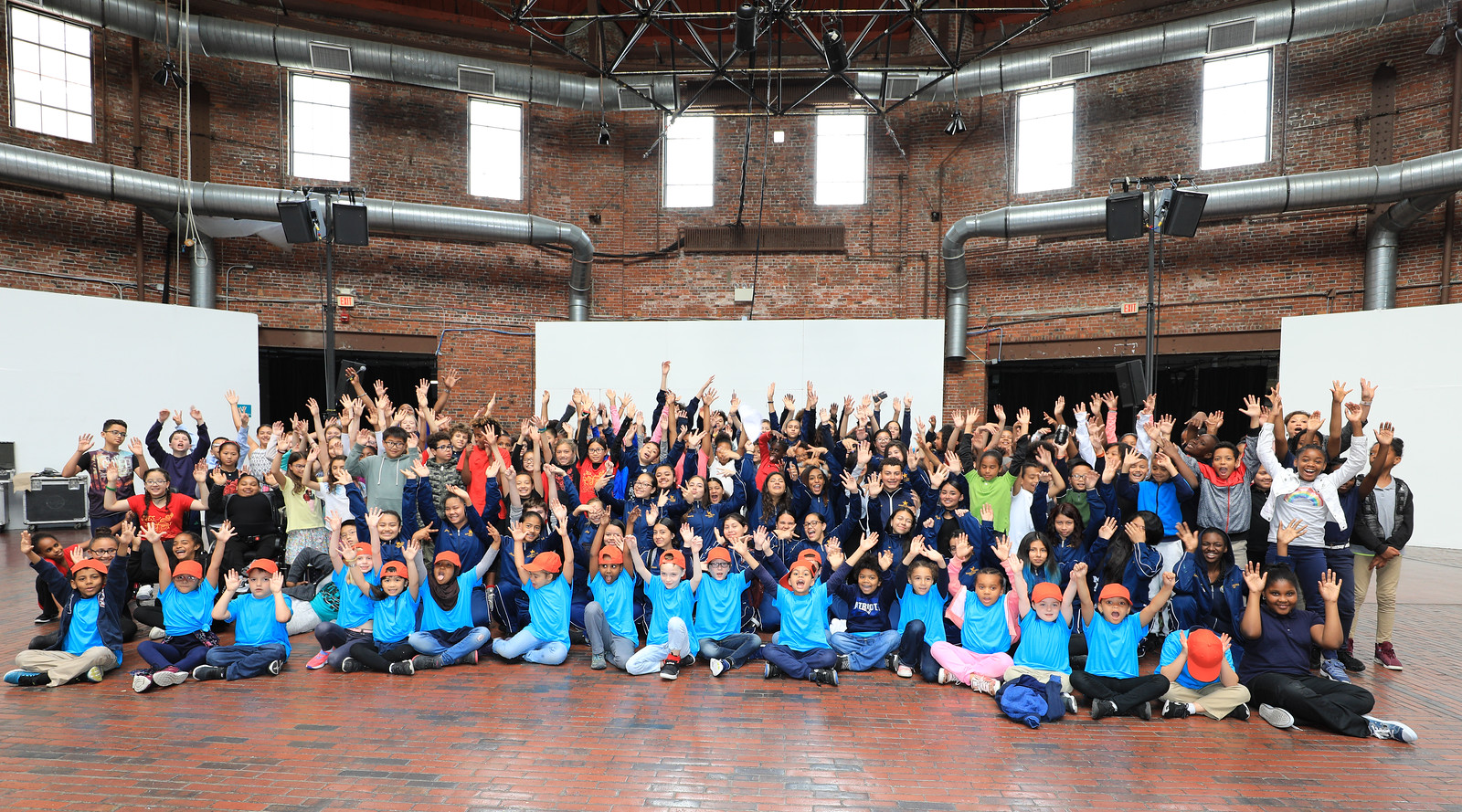Research & Insights / Inclusion through the Arts
Inclusion through the Arts

As part of Boston Public Schools (BPS) Arts Expansion, EdVestors invited teachers, teaching artists, and program staff from youth arts organizations to a workshop on Working with Students with Special Needs. Led by Dr. Rhoda Bernard, Managing Director of the Berklee Institute for Arts Education and Special Needs, the workshop explored ways to differentiate instruction when engaging different populations of students to ensure all students can succeed in the arts.
Responding to arts educators who told us while they regularly attend professional development trainings, they are eager for more training on working with students with special needs. Inclusion through the arts allow for richer social emotional learning that contributes to the growth of all students and teachers, important with nearly 20% of BPS students on Individualized Education Plans. Dr. Bernard provided great advice for participants valuable beyond those in the room.
No Cookie Cutter Approach
Dr. Bernard described the range of student special needs and outlined the limitations of such diagnoses. She explained that diagnoses have limited value for educators because “there’s no recipe or cookie cutter approach” to serving students with a specific diagnosis, with each case deserving individualized attention. Standardized diagnoses and approaches do not account for variations such as setting and structures, type of classroom, or particularized stressors and challenges faced by students. She also provided definitions of the different school structures and settings for students with special needs such as substantially separate classrooms, separate strands, inclusion, and reverse inclusion.
Connecting Arts to Key Skills
Dr. Bernard shared an overview of research that demonstrates the impact that specific arts disciplines can have on skill development for students with special needs:
Music can be connected to language and social opportunities, influence moods, and is one of the few content areas that spark both the left (logical, analytical) and right (creative) hemispheres of the brain simultaneously.
Visual Arts can improve fine motor skills, provide a medium to communicate without words, and help students more effectively focus their attention.
Drama can be a platform for students to negotiate their environment and deal with emotions. As a collaborative art form, it also develops communication and listening skills.
Dance helps students negotiate their environment, develop fine and gross motor skills, and improve motor planning skills.
Proven Techniques
Dr. Bernard described Accommodations, Adaptations, and Modifications (AAM) strategy that widely applicable to many activities and easily implemented by teachers:
- Accommodations – Changes made to the environment to help children access the curriculum and activities. Objective stays the same, environment changes.
- Adaptations – Changing size, color, pacing, and modality for the student to meet class objective. Objective stays the same, delivery changes.
- Modifications – Changing the objective for the student to achieve at the highest possible level. Objective changes.
Through a series of group activities Rhoda demonstrated the ease of adaptations by brainstorming changes to meet visual, auditory, or physical needs that would allow all students to actively participate. Alterations often invite new and creative techniques to activities that present additional learning.
Instead of physically hitting the drum, a student can use their voice to mimic the strike. Instead of clapping to the beat, a student can blink or nod to it.
Other strategies highlighted were Universal Design for Learning and Differentiated Instruction.
Working with Students, Not Around Them
Dr. Bernard stressed the importance of applying a combination of strategies to best serve students. She recognized that mistakes can be a significant stressor for students, especially in the performing arts. Dr. Bernard offered that minimalizing the connotation that mistakes are ‘bad’ by playing and learning through them can be big moments of educational and developmental breakthroughs for students. A foundation of trust allows the student and teacher to work with each other towards specified goals. She acknowledged that building relationships with students is key to successful learning because students are more willing to take risks and challenge themselves in a safe and welcoming environment.
Derek Lin is the Communications and Program Coordinator at EdVestors.



